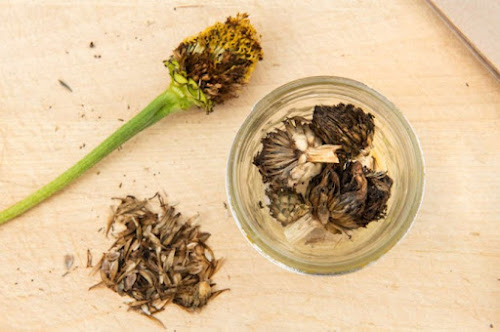Gardens, Growing zinnias from seeds is a delightful way to add vibrant colors to your garden. Zinnias are beautiful annual flowers that bloom throughout the summer, attracting butterflies and hummingbirds.
Whether you're a seasoned gardener or a beginner, this guide will provide you with step-by-step instructions on how to successfully plant zinnia seeds and nurture them into stunning blooms.
Table of Contents
- Choosing Zinnia Seeds
- Preparing the Soil
- Sowing Zinnia Seeds
- Watering and Care
- Protecting Zinnias
- Harvesting Zinnia Seeds
- Common Issues
- Frequently Asked Questions
- Conclusion
Choosing Zinnia Seeds
Before starting your zinnia gardening adventure, it's important to select the right zinnia seeds. Look for reliable seed suppliers or nurseries that offer a variety of zinnia cultivars. Consider factors such as flower color, size, and growth habit to choose the zinnias that best suit your preferences and garden requirements. Make sure to read the seed packets for specific instructions and recommendations for each variety.
Preparing the Soil
Zinnias thrive in well-drained soil with a pH level between 5.5 and 7.5. Begin by selecting a sunny location for your zinnia bed. Clear the area of any weeds or debris and loosen the soil using a garden fork or tiller. Incorporate organic matter like compost or well-rotted manure to improve soil fertility and drainage. Smooth the soil surface with a rake, ensuring it's level and free from clumps.
Sowing Zinnia Seeds
When it comes to sowing zinnia seeds, timing is crucial. Wait until the last frost date has passed and the soil temperature reaches around 70°F (21°C). Follow the instructions on the seed packet for the recommended spacing and depth. Generally, you should sow zinnia seeds about ¼ inch deep and 4 to 24 inches apart, depending on the variety of zinnias. Create furrows in the soil using a small garden trowel or your finger, and gently place the seeds in the furrows. Cover the seeds with soil and press it lightly to ensure good seed-to-soil contact.
Watering and Care
After sowing the zinnia seeds, it's important to keep the soil evenly moist but not waterlogged. Water the area gently using a watering can or a hose with a gentle spray attachment. Avoid overwatering, as it can lead to root rot and other diseases. As the seedlings emerge, thin them out to maintain proper spacing and allow enough airflow between plants.
Once the zinnias start growing, it's essential to provide them with regular care. Mulching around the plants helps retain moisture, suppress weeds, and regulate soil temperature. Fertilize the zinnias every four to six weeks with a balanced, water-soluble fertilizer according to the package instructions.
Protecting Zinnias
Zinnias are generally hardy and less prone to pest and disease issues. However, they can occasionally be affected by aphids, powdery mildew, or leaf spots. Monitor your plants regularly and take immediate action if you notice any signs of pests or diseases. Use organic pest control methods or consult a local garden center for appropriate solutions. Proper spacing, good air circulation, and avoiding overhead watering can help prevent fungal diseases.
Harvesting Zinnia Seeds
If you want to save zinnia seeds for future planting, allow some flowers to fully mature and develop seed heads. The petals will dry out and fall off, and the seed heads will turn brown and brittle. Carefully collect the seed heads and place them in a paper bag. Store the bag in a cool, dry place for a few weeks to ensure the seeds are fully dry. Once dry, gently shake the seed heads to release the seeds, and store them in airtight containers in a cool, dark location until you're ready to plant them.
Common Issues
While zinnias are generally easy to grow, they can encounter a few common issues. Some of these include:
- Wilting: Underwatering or extreme heat can cause zinnias to wilt. Ensure proper watering and provide shade during hot summer afternoons.
- Powdery Mildew: This fungal disease can affect zinnias, causing a white, powdery coating on the leaves. Improve air circulation and use fungicidal sprays if necessary.
- Aphids: These tiny insects can suck sap from the leaves, causing damage. Use insecticidal soap or introduce natural predators like ladybugs to control aphid populations.
Frequently Asked Questions
- Q: How long do zinnia seeds take to germinate?
- Q: Can I plant zinnia seeds directly in the ground?
- Q: Can zinnias tolerate hot weather?
- Q: How often should I water zinnias?
- Q: Can I grow zinnias in containers?
- Q: Do zinnias attract pollinators?
A: Zinnia seeds typically germinate within 7 to 10 days, depending on the variety and environmental conditions.
A: Yes, zinnia seeds can be planted directly in the ground after the last frost date.
A: Yes, zinnias are known for their ability to thrive in hot weather. They are heat-tolerant plants and can withstand high temperatures.
A: Zinnias require regular watering, especially during dry periods. Aim to keep the soil evenly moist, but avoid overwatering.
A: Absolutely! Zinnias can be grown successfully in containers. Choose a container with good drainage and provide adequate sunlight and water for the plants.
A: Yes, zinnias are excellent attractors of pollinators such as butterflies and bees. Planting zinnias in your garden can help support pollinator populations.
Conclusion
Growing zinnias from seeds is a rewarding and enjoyable experience. By following the steps outlined in this guide, you can successfully plant zinnia seeds and nurture them into beautiful, vibrant blooms. Remember to choose the right seeds, prepare the soil properly, sow the seeds at the appropriate time, and provide adequate care and protection. Enjoy the colorful display of zinnias in your garden and the joy they bring to both you and pollinators.
References:
